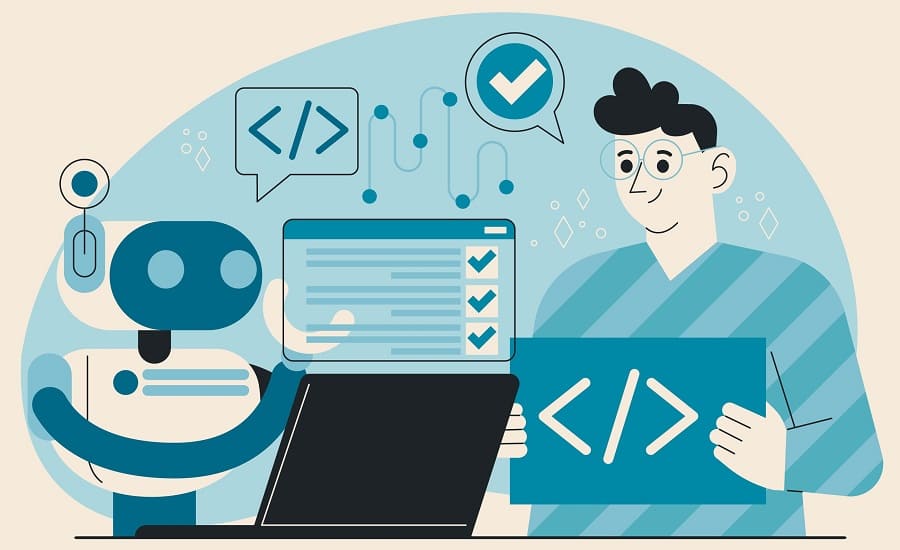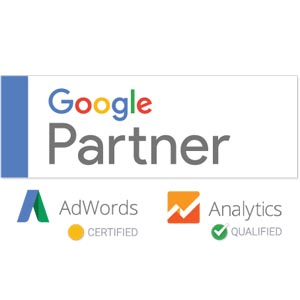Web design and development has always been an industry that is constantly changing and evolving. Web design has humble beginnings that date back to the early 1990s when Tim Berners-Lee created the very first website that introduced the concept of the World Wide Web to people. Early web design mainly was restricted to simple text documents until advancements began happening, introducing more customization options including the use of images.
Since the early days of web design, web developers can now create visually stunning and user-friendly websites with all types of functionalities – whether someone needs a simple, barebones blogging site to a robust, easy-to-maneuver eCommerce storefront. Website design and development is always incorporating new and advanced technologies into the field all in an effort to create more robust websites.
And that brings us to the role of artificial intelligence (AI) in web design and development. AI has had a massive impact in a number of industries, from finance and customer service all the way to simple automation of daily tasks on your smartphone. AI is also having an impact on web design and development in many ways, including AI tools and technologies that are offering developers new ways to work.
Introducing AI-Powered Design Tools for Web Development
AI-powered design tools are making the web development and design process even more efficient and streamlined than ever before. Certain AI tools can really help to cut down on development time, which is beneficial to developers and customers alike – by allowing teams such as our Columbus web development company to focus on key tasks and by keeping customer budget in mind.
AI tools are also regularly leveraged by developers and designers to better understand user behavior and search engine optimization, and they can be used to automate recommendations in the development process.
Some of the most popular AI web design and development tools that are making a splash in the industry include:
- Uizard: A beginner-friendly tool, Uizard allows users to easily create apps, websites, and user interfaces.
- AI: A multifunctional tool, Designs.AI can be used to help create videos, social media posts, logos, text, and voiceovers.
- ChatGPT: An AI-powered language model, ChatGPT is able to generate human-like text. While it cannot assist in writing code, this tool can be used to summarize specifications and information.
- Copilot by Github: This tool turns natural language prompts into usable coding suggestions across a range of programming languages.
AI-powered design and development tools like the above are having a real impact on the web development process – from start to finish.
How AI is Impacting the User Experience
Artificial intelligence has quickly become a key part of the web development process. And its impact on the user experience (UX) cannot be understated. UX encompasses all of the interactions that an end-user has with a company through its website, its services, and its products.
AI can be advantageous in UX design in a few different ways including:
- Providing basic chatbot services: This helps serve as a first point of contact with your users before they get in touch with a team member.
- Creating user personas: AI tools can seamlessly create user personas based on user data and insights. This can provide a better overall user experience that is catered to each individual user.
- Automating repetitive tasks: Maintaining a website takes time and resources. Some tasks, especially ones that are repetitive, can be handed off to AI such as cropping images, resizing images, and identifying patterns and trends in user data.
- Making predictions: AI can be used to help predict future user behavior. Through those predictions, AI tools can also make suggestions for information or different actions that are relevant to that user.
Increasing efficiency and improving UX with automated design solutions such as the ones above can help improve web design workflows, budget, productivity, and efficiency in many ways. Designers and developers can free up time and energy to focus on the technical and strategic part of the development process while AI tools help manage other tasks.
The Benefits of Using AI in Web Design
The role of artificial intelligence in web design and development brings with it a host of benefits that designers, developers, and users all feel. Some key benefits of using AI in web design include:
- Improved efficiency and accuracy: AI tools can be used to automatically identify all manner of issues including bugs, errors, and performance issues. Automating for things like bug checks cuts down on the need for as much human oversight and allows developers to step in when needed.
- Data-driven insight: Data has proven to be a powerful tool for decision-making and understanding your user base. AI analytic tools help to process all manner of data and can easily provide data-driven insights that allow businesses to make informed decisions on everything from marketing to website performance.
- Improved personalization: As discussed in relation to UX, AI tools allow for a deeper type of personalization for users. Specifically, AI algorithms are becoming better and better at analyzing user preferences and behavior in order to deliver a relevant experience.
Tips on Integrating Artificial Intelligence into Your Websites
There are many different ways to integrate artificial intelligence into your website! Here are a few tips on integrating AI into your websites, no matter the industry you are in.
- Add a chatbot to your site. A chatbot can be run by an AI tool and provides visitors on your site with accessible assistance 24/7.
- Incorporate voice search capabilities into your website. 20% of searches in the Google app are done by voice, and this type of search can work well for any size website.
- Monitor website performance with AI tools. Analytic tools can provide you with feedback on performance, visitor information, and what web pages or content is doing well.
AI is changing web design and development in many ways. It’s easier than ever to have a streamlined and intuitive website where users find value each time they visit. Integrating AI in simple ways can help you elevate your website and UX across the board.
Challenges Facing the Adoption of AI in Web Design and Development
In McKinsey’s 2020 State of AI report, 50% of respondents reported that “their companies had adopted AI in at least one business function.” This number will undoubtedly rise in the coming years. But it’s important to understand the challenges facing the adoption of AI in web design and development even as we discuss the benefits.
- AI relies heavily on the availability of large collections of data. These collections of data can be useful but also require careful storage and security. The adoption of AI can raise concerns over the security and storage of sensitive data that is being used to train algorithms – whether for a small business or on a global scale.
- Choosing the right data set can be difficult. AI tools will provide a business with the most efficient and relevant capabilities if the right data set is used. Choosing a data set that provides secure and accessible information can be a tough decision!
- There are challenges to be found in the deployment of AI tools. Not all systems are designed with AI solutions in mind! So, software and hardware redesign may be required.
But even with challenges like these that need to be kept in mind, AI has found itself a part of the web design and development process. Designers and developers will continue to learn how to best utilize AI in their development workflows to continue delivering powerful designs to their clients.
Work with a Top Rated Web Development Company
If you’re looking to work with a Columbus web development company that uses the latest cutting-edge technology available, including AI tools, look no further than Split Reef.
Connect with us over the phone or online for a free quote today.

Split Reef is a modern, results-driven digital organization always ready to support clients in their search for digital supremacy. With Split Reef, your budget isn’t going to hold you back from partnering with us to make your project successful. Our offices are located in Columbus, Ohio and Jacksonville, Florida.









